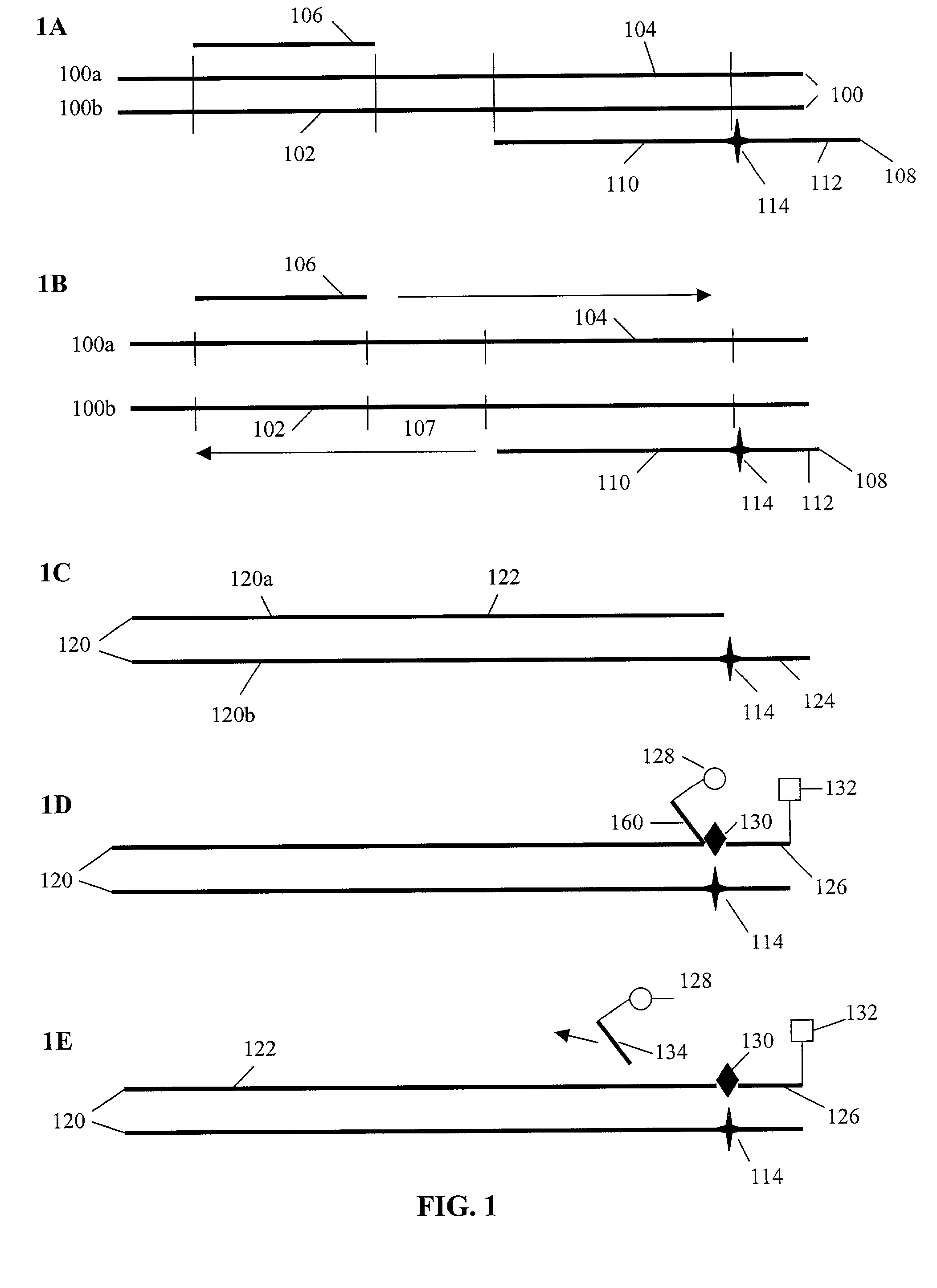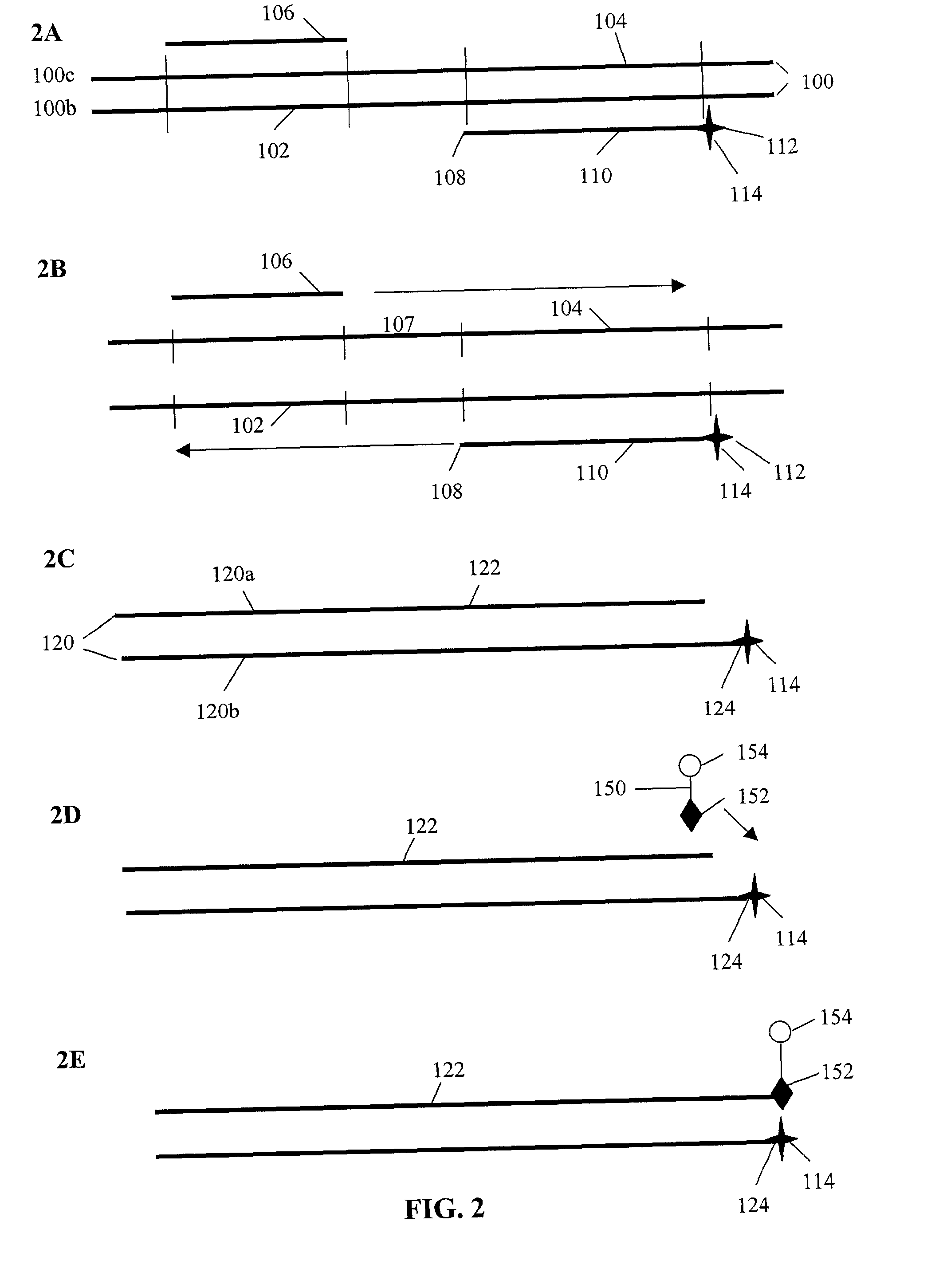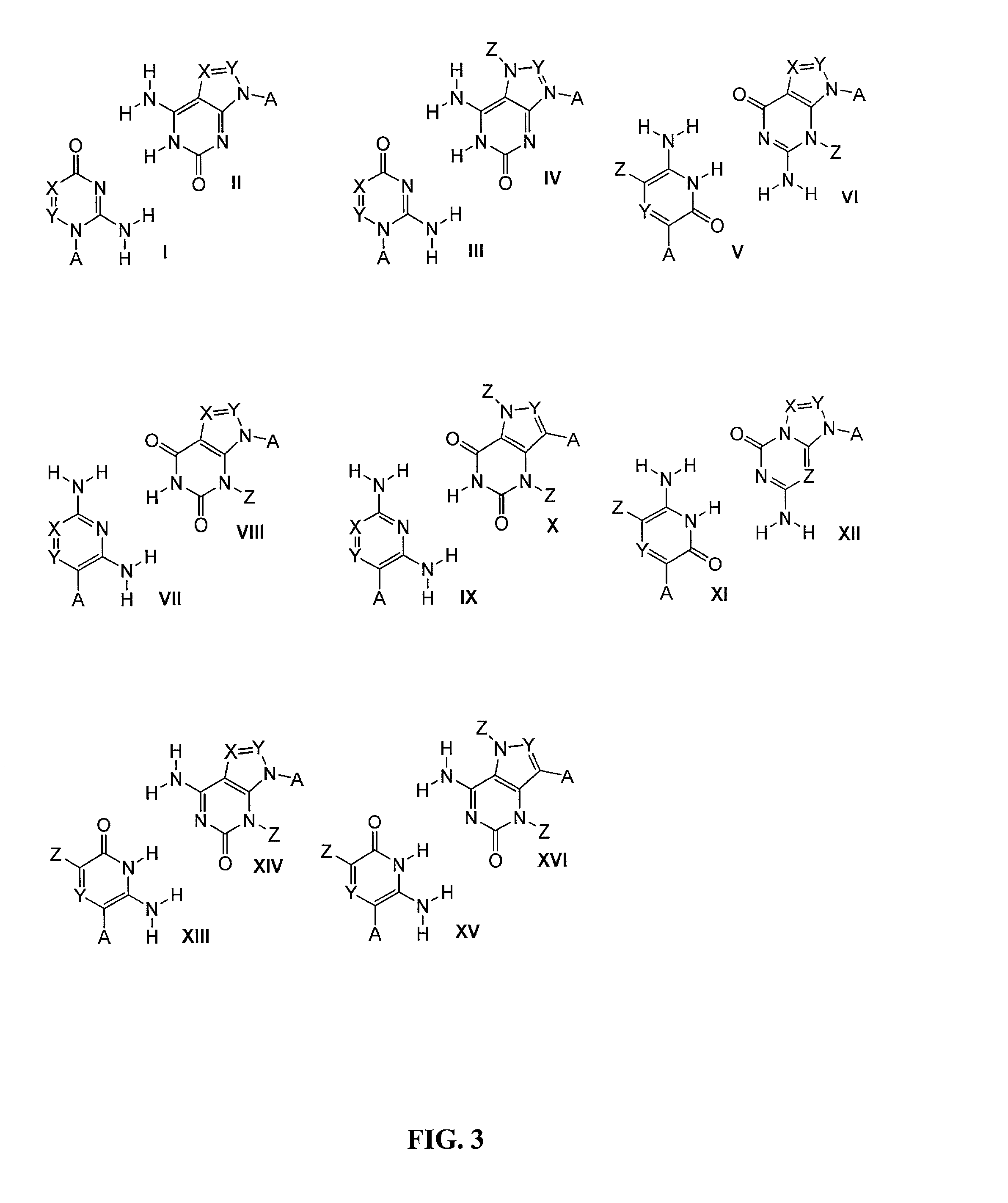Materials and methods for detection of nucleic acids
- Summary
- Abstract
- Description
- Claims
- Application Information
AI Technical Summary
Benefits of technology
Problems solved by technology
Method used
Image
Examples
example 1
Primer Design
[0167]The symbols indicated in the sequence of the nucleic acid components are as follows: A=deoxyadenylate; T=deoxythymidylate; C=deoxycytidylate; G=deoxyguanylate; X=deoxy-iso-cytosine (d-isoC); Y=deoxy-iso-guanine (d-isoG); P=nucleotide of first primer complementary to polymorphic nucleotide in target nucleic acid; B=3′ modification of reporter nucleic acid by addition of BiotinTEG CPG (Glen Research, Sterling, Va.) to 3′ end that functions to block nucleic acid polymerase and extension of the reporter; Q=signal quenching element (5′-5-[(N-4′-carboxy-4(dimethylamino)-azobenzene)-aminohexyl-3-acrylimido]-2′-deoxyUridine (Dabcyl dT; Glen Research, Sterling, Va.) incorporated into reporter by addition of 5′-Dimethoxytrityloxy-5-[(N-4′-carboxy-4(dimethylamino)-azobenzene)-aminohexyl-3-acrylimido]-2′-deoxyUridine-3′-[(2-cyanoethyl)-(N,N-diisopropyl)]-phosphoramidite (Dabcyl dT; Glen Research, Sterling, Va.); FAM=Signal generating element (6-carboxyfluorescein (6-FAM); Gle...
example 2
Allele Specific PCR
[0175]The following nucleic acid components were used in a fluorescence-based PCR reaction:
[0176]
Nucleic AcidComponentSequenceSEQ ID NO:Reporter5′-FAM-TYQCCTGTCTGC-3′SEQ ID NO: 1First Primer,5′-GGCCAGCATAAGCCC-3′SEQ ID NO: 4C specificFirst Primer,5′-GGCCAGCATAAGCCA-3′SEQ ID NO: 5A specificSecond3′-GTTGCTTTTGTCGACTACCAXAGGACAGACG-5′SEQ ID NO: 3PrimerTemplate, G3′-GGGAATGCAGTTCGATCAGTGAAACGAACGTTCTGSEQ ID NO: 6ACCTTTAAGT-5′5′-CCCTTACGTCAAGCTAGTCACTTTGCTTGCAAGACTSEQ ID NO: 7GGAAATTCA-3′Template, A3′-GGGAATGCAGTTCGATCAGTTAAACGAACGTTCTGSEQ ID NO: 8ACCTTTAAGT-5′5′-CCCTTACGTCAAGCTAGTCAATTTGCTTGCAAGACTSEQ ID NO: 9GGAAATTCA-3′
[0177]The working concentration (1×) of components in PCR reaction for individual 20 μl PCR reaction volumes is shown below:
[0178]
Component1X Conc.Tris pH 8.010mMBovine Serum Albumin0.01%Triton ™ X-1000.01%Herring Sperm DNA0.1μg / mlPotassium acetate40mMMgCl22mMAmplitaq Gold ™ DNA1U / rxnpolymerasedATP50μMdGTP50μMdCTP50μMdTTP50μMFirst Primer0.2μMSecond Pr...
example 3
Comparison of “Fast-shot™” Amplification Versus Standard PCR in SNP Detection
[0189]This example shows the relative levels of allelic discrimination between “Fast-shot™” amplification and traditional PCR cycling parameters by varying the target levels over three orders of magnitude. Fast-shot™ amplification involves cycling between the denaturation and annealing temperatures of the primers with stops at these temperatures for very short periods of time (for example, 1 second).
[0190]The following nucleic acid components were used:
[0191]
Nucleic Acid ComponentSequenceSEQ ID NOFirst Primer,5′-CCCTTACGTCAAGCTAGTCAC-3′SEQ ID NO: 10C specificFirst Primer,5′-CCCTTACGTCAAGCTAGTCAA-3′SEQ ID NO: 11A specificSecond3′-ACGAACGTTCTGACCTTTAAGT-FAM-5′SEQ ID NO: 12PrimerTemplate, G3′-GGGAATGCAGTTCGATCAGTGAAACGAACGTTCTGSEQ ID NO: 6ACCTTTAAGT-5′5′-CCCTTACGTCAAGCTAGTCACTTTGCTTGCAAGACTSEQ ID NO: 7GGAAATTCA-3′Template, A3′-GGGAATGCAGTTCGATCAGTTAAACGAACGTTCTGSEQ ID NO: 8ACCTTTAAGT-5′5′-CCCTTACGTCAAGCTAGTCAA...
PUM
 Login to View More
Login to View More Abstract
Description
Claims
Application Information
 Login to View More
Login to View More - R&D
- Intellectual Property
- Life Sciences
- Materials
- Tech Scout
- Unparalleled Data Quality
- Higher Quality Content
- 60% Fewer Hallucinations
Browse by: Latest US Patents, China's latest patents, Technical Efficacy Thesaurus, Application Domain, Technology Topic, Popular Technical Reports.
© 2025 PatSnap. All rights reserved.Legal|Privacy policy|Modern Slavery Act Transparency Statement|Sitemap|About US| Contact US: help@patsnap.com



